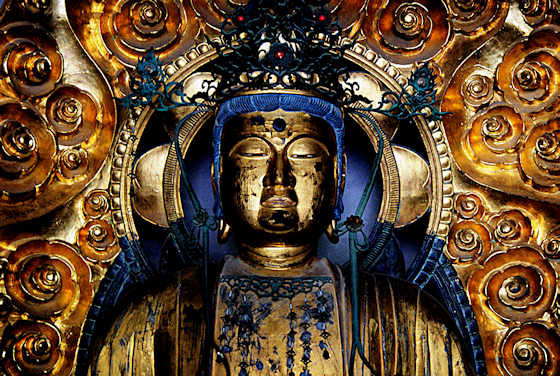The year of the rabbit is coming to a close, so time to tell the story of the white rabbit of Inaba.
Hakuto Shrine is located near the beach a little east of Tottori City. The old province name for this area was Inaba. The kami of Hakuto Shrine is Hakutojin, the kami name for the white rabbit of Inaba.
The rabbit was on one of the Okis islands, about 50kms offshore (now a part of Shimane). He wished to travel to the mainland so he a devised a plan that involved tricking some crocodiles. Incidentally, the story is often told nowadays with sharks instead of crocodiles, but the original story quite clearly does not involve sharks.
The rabbit suggested to the crocodiles that the rabbit clan was much bigger than the crocodile clan, and to prove it he would need to count all the members of the crocodile clan so he suggested that they all line up and as he stepped on them one at a time he would be able to count them and come to a definitive answer. The crocodiles agreed and so the rabbit began to make his way to the mainland using the crocodiles as stepping stones.
The rabbit was just about to the beach when he rather foolishly decided to shout out "Hah! tricked you..." upon which the last crocodile lunged for the rabbit and while not able to kill it managed to strip the fur from the rabbit. The story now intersects with another legend, that of Okuninushi,
his eighty brothers, and
Princess Yakami.
Okuninushis brothers, the Yasogami, were coming along the beach on the way to see Princess Yakami to see which of them she would choose as a husband. The Yasogami were quite cruel, and seeing the poor suffering rabbit they suggested that it would find relief by bathing in seawater and then standing in the wind. Of course this just caused more pain and suffering for the hapless rabbit. Following along in the rear carrying the baggage for his brothers was Okuninushi. He told the rabbit to bathe is freshwater and then roll in sedge pollen, which he did and was then healed. In gratitude the rabbit told Okuninushi that even though he was just the bagggage carrier he would be the one chosen by Princess Yakami.

Myths, like people, travel great distances. There seem to be several possible sources of this myth. In Indonesia there is a famous story involving a small deer that tricks crocodiles into lining up across a river on the pretense of being counted but really so the deer can cross the river. Also, the Koguryo and Puyo peoples of what is now northern Korea had foundation legends that involve a hero crossing water on the backs of turtles that seem to be derived from older stories from further south in China that had crocodiles fulfilling the same role. There are several more myths from Koguryo that mirror Japanese myths, and all along the Japan Sea coast are shrines dedicated to a variety of kami who came here from what is now Korea.


















